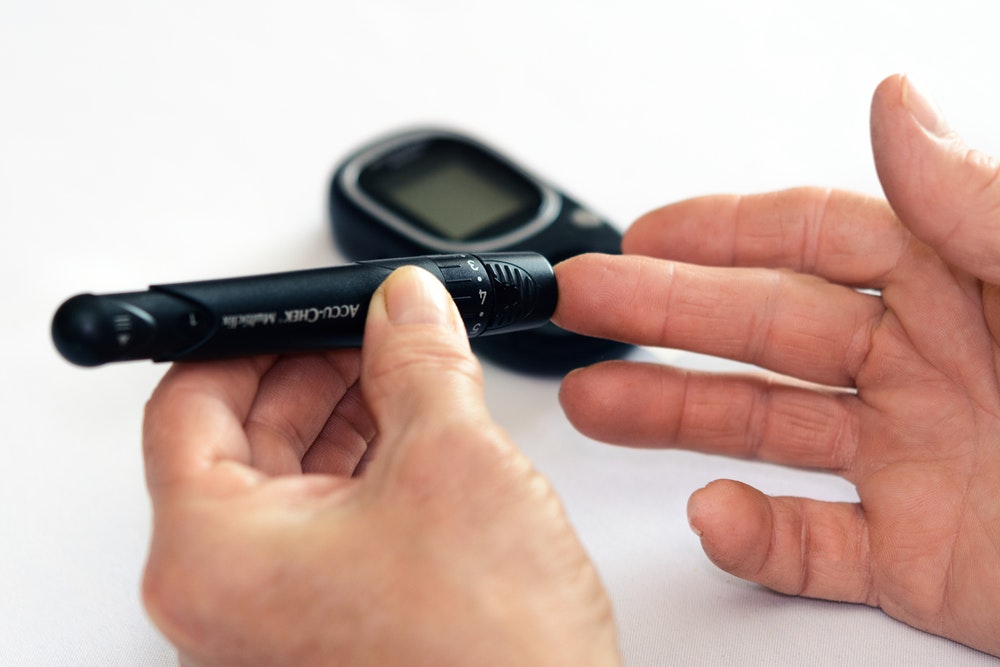High blood sugar levels is an issue every person with diabetes is well acquainted with. High blood sugar occurs when your body cannot convert sugar in the blood to energy for cells. Imbalanced blood sugar can impair your ability to meet the demands of daily life, and—if chronically elevated—impact your long-term health.
According to the Centers for Disease Control and Prevention (CDC), maintaining a lower blood sugar can help prevent or delay diabetes complications, including health issues such as heart disease, kidney disease, nerve diseases, and vision loss.
Here we look at the signs to tell if your blood sugar levels are under control and understand the ways to lower them, effectively and naturally.
Signs Your Blood Sugar Levels Are Imbalanced
Even if you think you are relatively healthy, you can still miss out on the warning signs. Many people could have prediabetes- higher than normal blood sugar levels that aren’t yet considered type 2 diabetes— and don’t even know about it.
Signs your blood sugar levels could be imbalanced include:
- Sugar and carb cravings
- Fatigue
- Weight gain
- Excessive thirst
- Difficulty concentrating
- Frequent peeing
- Dry skin
Even for individuals who aren’t necessarily at high risk for developing diabetes, poorly managed blood sugar can lead to common complications, including fatigue, weight gain, and sugar cravings.
Ways to Lower Your Blood Sugar Levels Naturally
It is very important for people with diabetes (type 2) to try and lower their blood sugars through dietary approaches. For some people, it not only can be preventive, but it can also help with reversal of the actual disease. Making key lifestyle changes also help change the course of the disease entirely, eliminating the need for medication.
Here are some ways to do it.
Avoid Eating Large Meals
Eating in moderation is one way to keep carbs under control which is important for people with type 2 diabetes. Also, avoid eating bigger meals in the night, as our bodies become more insulin resistant as the day goes on—so a meal that you eat in the evening can cause a greater spike in blood sugar than a meal you eat during the day. Instead, feed your body throughout the day to help regulate your blood sugar levels and prevents highs and lows.
People practising portion control also promote controlled bodyweight which positively affects your blood sugar levels and reduces the risk of developing type 2 diabetes.
Limit Your Carb Intake
Continuing from the last point, lowering your overall intake of carbohydrates is important for balanced blood sugar. Carbs have a significant impact on blood sugar levels. Carbohydrates are broken down into glucose, which insulin then moves into cells. An unbalanced diet, including increased intake of carbs, can disrupt the insulin function, causing blood sugar to rise.
How many carbs should you be consuming depends on individual to individual. However, a typical starting point for people with diabetes is to limit carb intake to 200 to 245 grams (g) per day, which amounts to about one-half of your daily calories coming from carbs, according to the CDC.
Load up on Fiber
Increasing your fiber intake can help stabilize your blood sugars and also positively affects digestion. A 2017 study published in the journal Advances in Obesity Weight Management & Control found that eating more fiber-rich fruits and vegetables not only helps with lower blood sugar but also reduce body weight.
Fiber plays a preventative role, too. According to a March 2018 study published in the Journal of Chiropractic Medicine, studies have shown that high-fiber diets can reduce the incidence of type 2 diabetes by 15 to 19 percent compared to low-fiber diets.
Good sources of fiber include leafy greens, Brussels sprouts, broccoli, artichokes, raspberries, pears, beans, lentils, peas, avocados, pumpkin seeds, and oatmeal.
Exercise Regularly
Ramping up your physical movement every day helps improve blood glucose in people with type 2 diabetes. Regular exercise increases insulin sensitivity and the body’s ability to use glucose as energy. Increased insulin sensitivity means that the body’s cells become better at using the available sugar in the blood.
A study published in September 2017 in Frontiers in Endocrinology found exercising 30 minutes after the start of a meal is usually best for maintaining blood sugar controls. Good forms of exercise include weightlifting, light jogging, running, cycling, hiking, swimming and more.
Get More Quality Sleep
Bad sleep habits and lack of rest also affect blood sugar levels and insulin sensitivity. Poor or limited sleep affects your body chemistry as it reduces the release of growth hormones and increases cortisol levels, both of which plays an important role in blood sugar control.
The National Sleep Foundation recommends aiming for seven to nine hours of uninterrupted sleep per night. You can also adopt sleep techniques like sleeping in a cool dark room, not looking at screens for at least a half-hour before bedtime, and avoiding consuming caffeine before bed to get that quality shuteye.
Drink More Water, and Stress Less
Staying hydrating is a simple but effective way to stay in control of your blood sugar levels. One study found that people who drank more water had a lower risk of developing hyperglycemia (high blood sugar).
The idea is that water helps flush glucose out of the body; it essentially helps to dilute your blood sugar and lowering blood sugar in a healthy way.
To maintain that lowered blood sugar, maintaining your stress levels is equally important. According to the Diabetes Teaching Center at the University of California in San Francisco, when you’re stressed, your insulin levels fall, certain hormones rise, and more glucose is released from the liver, which ends up in the bloodstream and can cause disruptions for up to eight hours.
Similar to sleep deprivation, stress can also cause elevated levels of cortisol, which raises blood sugar. Practice stress-busting habits like meditation, deep breathes, yoga, or even simply going for a quick walk can help control your blood sugar.




